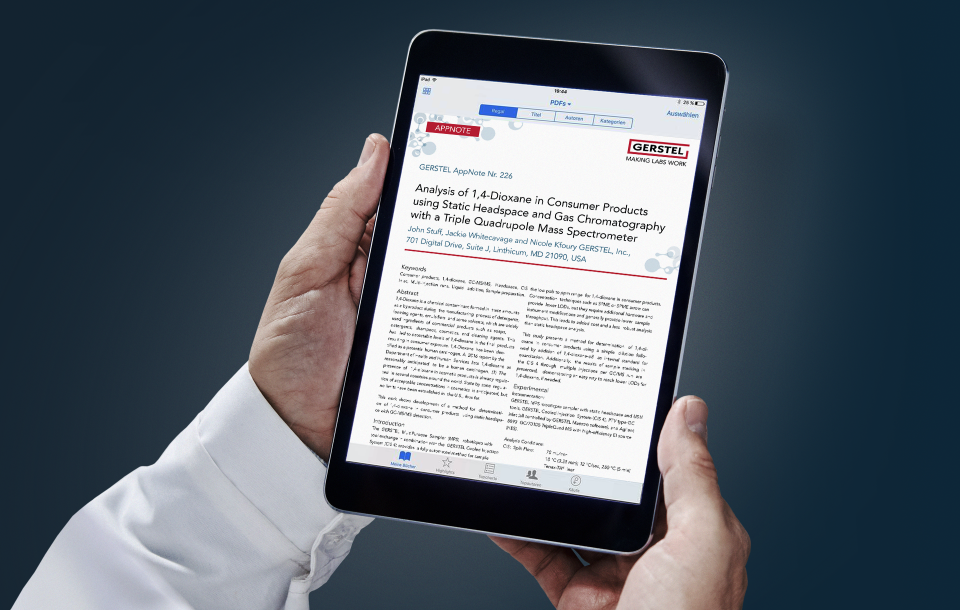IV bag components were analyzed for extractables using direct thermal desorption/thermal extraction combined with a unit mass resolution GC/MSD system. The results were compared to those obtained for leachables by stir bar sorptive extraction of an aqueous simulant...
In metabolomics studies, large sample sets have to be analyzed to allow statistical differentiation of sample types. Obviously, repeatability of the whole analytical workflow, including sample preparation, sample introduction, separation and detection, is hereby of the utmost importance.
In metabolomics studies, large sample sets have to be analyzed to allow statistical differentiation of sample types. Obviously, repeatability of the whole analytical workflow, including sample preparation, sample introduction, separation and detection, is extremely important in order to achieve such a differentiation.
Liquid-liquid extractions have long been performed manually and are used to extract and concentrate analytes from aqueous matrices. Inclusion of liquid-liquid extraction in many official methods...
This application note describes the direct thermal desorption of desirable and undesirable aroma compounds from edible oils. The oil sample is placed in a microvial from where it is directly thermally desorbed using a GERSTEL Thermal Desorption Unit (TDU).
This note presents a fully automated analysis system for the determination of Δ9-tetrahydrocannabinol (THC) and its metabolites in blood serum. Automation is based on the GERSTEL MultiPurpose Sampler...
Analyzing blood serum for opioids, cocaine and metabolites is a routine task in forensic laboratories. The most commonly used methods involve several manual or partly-automated sample preparation...
Pyrolysis GC-MS was used to profile residual solids after drying aged whiskey samples. The samples in question were both 20 years old from the same unaged parent distillate but matured in the very different wood species of Quercus Robur and Quercus Alba.
In order to improve pyrolysis chromatographic analysis of materials that release polar functional groups e.g. carboxylic acids, a simple and rapid methylation method based on TDU-pyrolysis/GC-MS in the presence of tetramethylammonium hydroxide (TMAH) was developed. Linseed oil was selected as test material because of its high triglyceride content comprising both saturated and unsaturated fatty acids. Pyrolysis was performed at 500, 600 and 700 °C using a GERSTEL pyrolysis module (PYRO) with a heated platinum filament.
The US Consumer Product Safety Commission’s (CPSC) Test Method CPSC-CH-C1001-09.3 [1], is used by testing laboratories for the determination of phthalate content in children’s toys and child care articles covered by the standard set forth in the Consumer Product Safety Improvement Act Section 108.
Pagination
- Previous page
- Page 11
- Next page
